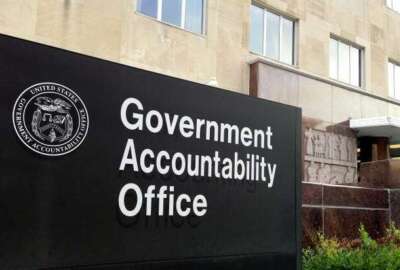
On the High Risk List? That doesn’t make you a horrible person
The biennial list steams on, a few programs off, a few added, but the billions go.
Members of Congress, busy finishing a gigantic spending bill in an improving economy, probably aren’t paying attention to the biennial High Risk List, compiled by their very own Government Accountability Office.
The High Risk List is something like the cereal aisle in the supermarket. A good number of perennials seem to always remain, yet a few new items pop up and some old favorites disappear. For example, like Strawberry Honeycomb, the Defense Department management of its support infrastructure is off the list. GAO explains: “DOD has more efficiently utilized military installation space; reduced its infrastructure footprint and use of leases, reportedly saving millions of dollars; and improved its use of installation agreements, reducing base support costs.” They’ve got at least that one under control.
Like Cinnamon Toast Crunch Chocolate Churros, two of the pandemically-spawned programs of the Small Business Administration slid onto the list. One, the Payroll Protection Plan and Economic Injury Disaster Loans. Recall that all sorts of accountability was promised for last year’s Cares Act, including the involvement of the inspectors general.
“You need appropriate transparency and accountability” for the hundreds of billions of dollars that went out, Comptroller General Gene Dodaro said, “and it’s really not met the expectations that were set for it.”
Also new this year: national efforts to prevent, respond to, and recover from drug misuse. This is mostly about the opioid crisis. GAO points out that between 2002 and 2019, drug misuse killed 800,000 Americans, either from overuse of prescriptions or abuse of illegal drugs. In the latest 12 month period for which the Centers for Disease Control and Prevention has complete figures, ending May 2020, opioid use killed 80,000. Not pandemic death levels, but more than car accidents and murders combined.
These, and the other 34 programs on the list, all have agencies behind them, in some cases multiple agencies. The agencies have people working on the high risk programs, adding up to tens of thousands of federal employees. The GAO names agencies, but it doesn’t name names.
For instance, the strategy for combating drug abuse is ultimately the responsibility of the Office of National Drug Control Policy. That’s part of the White House. It’s got an annual budget of around $380 million. But many other agencies have to do with drug control. So whose — to borrow a bit of military vernacular — belly button do you push?
But that’s the point of GAO’s approach. It states the problem, provides the evidence, and reiterates recommendations it made, sometimes over and over. It wisely refrains from thundering judgment.
Ultimately, though, accountability does rest with people. The agencies involved know who they are and who’s in charge. So do members of Congress, or least their staffs do. If a particular committee decides to hold a hearing on Medicare improper payments or food safety oversight, somebody has to show up.
On the other hand, the programs really do need fixing and that sometimes requires different people. What’s so hard? A few things:
- Toxicity of the environment. People who fail at something, make a mistake, or simply make decisions others don’t like — why, they aren’t merely wrong, they’re evil and despicable. Or at least that’s how they come out on Twitter. Placing personal blame and pointing auditory fingers doesn’t get at-risk programs fixed.
- Bureaucratic or institutional quicksand. So often final authority to impose an obvious fix simply stalls three steps into the bureaucratic thicket, a phenomenon that goes with big government no less than big business. Whistleblower complaints take years to resolve. Watching all the testifiers at hearings on the January 6 Capitol bust-in, my overall impression is of people deep within big bureaucracies doing everything they can to avoid saying, “I screwed up.” The ease of hiding behind process or indistinct chains of command causes programs to persist year after year on the High Risk List.
- Some high risk items cut across most of the government. If agency A is a human capital excellence machine, that won’t get strategic human management capital management off the list if everybody else remains indifferent.
- Some items stem from overlap and duplication, or the solution has a statutory component, like resolving the federal role in housing finance, or modernizing the U.S. financial regulatory system. The GAO suggests getting Fannie Mae Freddie Mac out of conservatorship, a highly charged political hairball the Trump administration could not accomplish.
In truth, the High Risk List will always live. Like an old ship, the federal government requires never-ending maintenance. The public is mostly unaware of the list, so frankly the political will to fix some of these challenges just isn’t there. If Congress is in charge of a cruise ship, it’ll make sure the buffet is generous and stocked as long as the bilge pumps keep working. Otherwise agencies will have to pull up their own socks.
Nearly Useless Factoid
A t-shirt worn 100 days a year would lose 0.1% of its total material in the form of belly button lint.
Source: Vox.com
Copyright © 2025 Federal News Network. All rights reserved. This website is not intended for users located within the European Economic Area.
Tom Temin is host of the Federal Drive and has been providing insight on federal technology and management issues for more than 30 years.
Follow @tteminWFED





